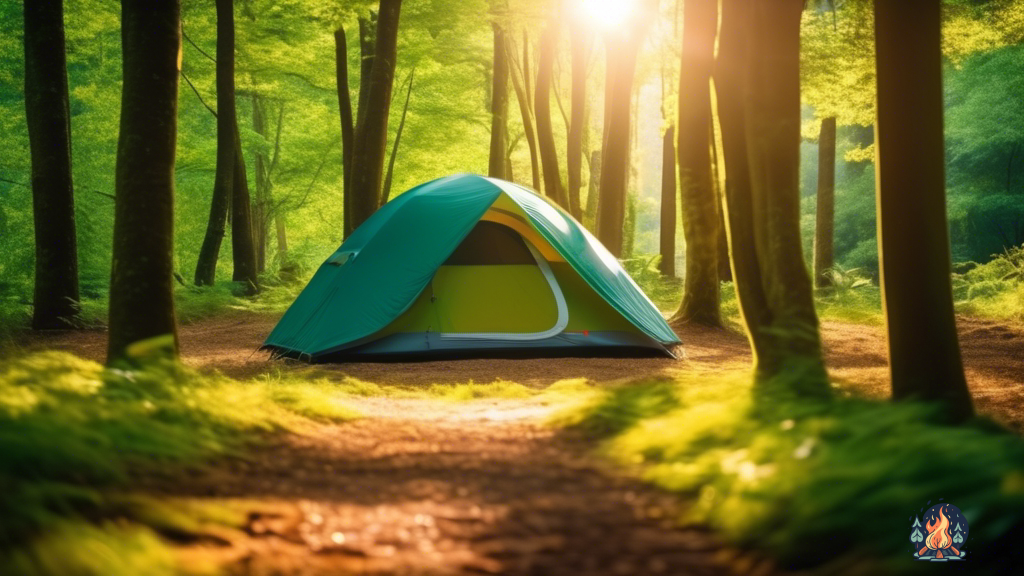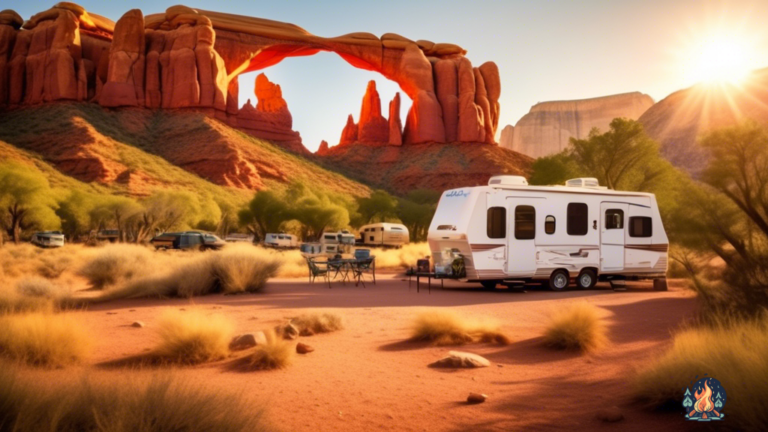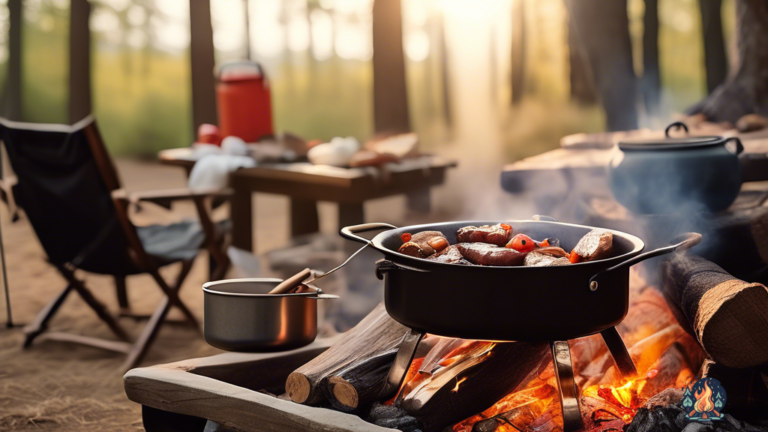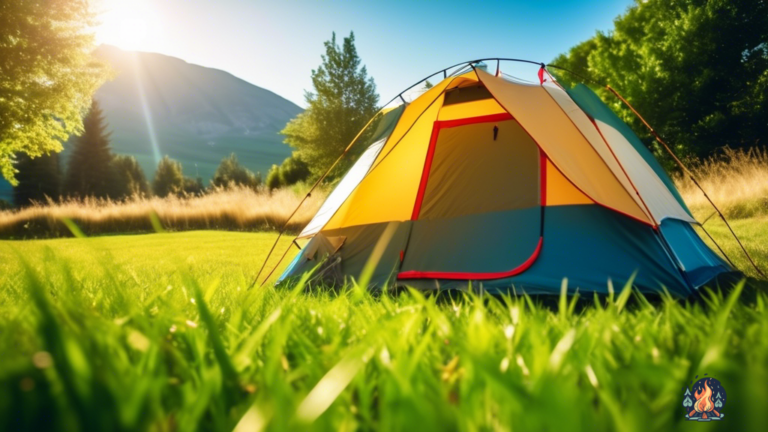Tent For Solo Camping: Find Your Perfect Adventure Companion
by Kevin Fairbanks • Updated: February 21, 2024
Looking for the perfect tent for solo camping? Look no further! Find your ideal adventure companion and elevate your outdoor experiences with our top recommendations. Start planning your next journey now!

When you’re out in the wilderness, seeking solace and freedom, having the right tent can make all the difference in your solo camping adventure.
Finding the perfect tent that fits your needs and preferences can be a game-changer, allowing you to fully immerse yourself in nature while feeling safe and comfortable.
From size and style to weight and durability, every aspect of your tent choice can impact your outdoor experience.
Choosing the right tent for solo camping is a personal decision that should cater to your individual needs and desires.
Whether you prefer a spacious tent with plenty of room to move around or a lightweight option for easy portability, your tent should be your trusted companion on your adventure.
With the right tent, you can embrace the freedom of the great outdoors and create lasting memories that will stay with you long after your solo camping trip is over.
Key Takeaways
- The right tent choice can significantly impact the overall outdoor experience during solo camping adventures.
- Prioritizing size, style, weight, and durability is crucial when selecting a tent for solo camping needs.
- Weather resistance and durability are essential factors to consider for protection against elements and peace of mind.
- Ventilation and comfort features play a key role in enhancing the solo camping experience and creating lasting memories.
Choosing the Right Size and Style
Looking for a tent that’s just right for your solo camping adventures?
Check out the different sizes and styles to find your perfect match!
Whether you prefer a cozy one-person tent for a minimalist experience or a slightly larger one with room to spread out, there’s a tent out there that will suit your needs.
Consider the style as well – from traditional A-frame tents to modern dome designs, each offers its own perks and benefits for your outdoor escapades.
Don’t feel boxed in by the idea of solo camping – embrace the freedom of choosing a tent that fits your unique preferences and style.
Think about how you want to experience nature and what features are essential for your comfort.
With the right size and style, your tent can become more than just a shelter – it can be your adventure companion, ready to take you on unforgettable journeys under the open sky.
Considering Weight and Portability
When it comes to weight and portability, you’ll want to prioritize a tent that is both lightweight and easy to carry on your outdoor excursions. Imagine the freedom of being able to pack up your tent effortlessly and set off on your next solo adventure without feeling burdened by heavy equipment. Look for tents made with lightweight materials like nylon or polyester, and consider the compactness of the tent when folded up. The easier it is to carry, the more freedom you’ll have to explore the great outdoors without being weighed down.
| Weight (lbs) | Portability | Durability |
|---|---|---|
| 2.5 | Easy | High |
| 3.0 | Moderate | Medium |
| 3.5 | Difficult | Low |
| 2.0 | Very Easy | High |
| 3.2 | Moderate | High |
In this table, you can see how weight, portability, and durability are interconnected when choosing a tent for solo camping. By selecting a lightweight and easy-to-carry tent, you not only increase your freedom to roam but also ensure that your shelter will last through many outdoor adventures. Prioritizing these factors will enhance your camping experience and allow you to fully embrace the spirit of solo exploration.
Weather Resistance and Durability
For ultimate protection against the elements, you’ll want a tent that can withstand harsh weather conditions and rough terrain. Look for a tent made of durable materials like ripstop nylon or polyester with a high waterproof rating.
These materials will keep you dry and cozy even during unexpected rain showers or windy nights. Additionally, consider a tent with reinforced seams and sturdy poles to ensure it can withstand the elements without tearing or collapsing.
When you’re out in the wilderness seeking adventure, you want a tent that can keep up with your free spirit. Opt for a tent with a strong frame and reliable zippers that won’t fail you when the winds pick up or the rain starts pouring.
A weather-resistant and durable tent will not only provide you with a safe shelter but also give you peace of mind as you explore the great outdoors. Choose a tent that can handle whatever nature throws your way, so you can focus on enjoying your solo camping experience to the fullest.
Ventilation and Comfort Features
Discover how you can enhance your outdoor experience with top-notch ventilation and comfort features. When you’re out in the wild, enjoying the freedom of solo camping, these features can make all the difference in your overall comfort and enjoyment.
Imagine laying back in your tent, feeling the gentle breeze flow through mesh panels, keeping you cool and refreshed even on hot summer nights.
Picture yourself snuggled up in a cozy sleeping bag, with adjustable vents allowing you to control the airflow and create the perfect temperature inside your tent.
Envision waking up in the morning, well-rested and ready for a new day of adventure, thanks to the ergonomic design and plush materials that ensure a comfortable night’s sleep.
With these ventilation and comfort features, your solo camping experience will be elevated to a whole new level, allowing you to fully immerse yourself in the beauty of nature without any distractions.
Setting Up and Taking Down Your Tent
Setting up and taking down your tent is a breeze when you follow these simple steps. First, find a flat area to pitch your tent, ensuring there are no rocks or sticks that could damage the floor. Lay out the tent body and stake down the corners to keep it in place. Next, assemble the poles and insert them into the corresponding sleeves or clips. Once the poles are secure, attach the rainfly if needed and secure it with the provided clips or Velcro straps. Finally, adjust the tension of the tent by tightening the guy lines and stakes for a sturdy setup. When it’s time to take down your tent, reverse the steps in the same order, starting with removing the rainfly and poles, then unstaking the corners and folding the tent body neatly for storage.
| Setting Up | Taking Down |
|---|---|
| Find flat area | Remove rainfly |
| Stake down corners | Take out poles |
| Assemble poles | Unstake corners |
| Attach rainfly | Fold tent body |
Camping solo provides a sense of freedom that can be liberating and empowering. Being able to set up and take down your tent efficiently adds to the overall experience, allowing you to spend more time enjoying the outdoors and less time on tedious tasks. The process of pitching a tent becomes second nature with practice, giving you the confidence to explore new places and embark on exciting adventures without any hesitation. So, embrace the simplicity of setting up your tent and relish in the freedom it brings to your solo camping escapades.
Frequently Asked Questions
Are there any specific tent features that cater to solo campers, such as built-in storage pockets or solo-sized vestibules?
Look for tents with built-in storage pockets and solo-sized vestibules to cater to your solo camping experience. These features provide convenient organization and extra space for your gear, giving you the freedom to roam and explore.
How does the tent’s design factor into its performance in different types of terrain, such as rocky surfaces or sandy beaches?
When setting up camp on rocky surfaces, choose a tent with sturdy poles and reinforced seams for durability. Opt for a tent with sand pockets or stakes for stability on sandy beaches.
What are some tips for maximizing the lifespan of a solo camping tent, especially when camping in harsh weather conditions?
Want to prolong your solo camping tent’s lifespan in harsh weather? Secure it with quality stakes, apply seam sealer regularly, and avoid storing it wet. Remember, taking care of your gear means more freedom in the wilderness.

Hi, I’m Kevin, a lifelong camping enthusiast and the voice behind Campfire Discoveries. From tent to RV to cabin camping, I’ve explored it all. Join me as we share stories and tips around the campfire, deepening our connection with the great outdoors.
Keep Reading
-
Discover National Monuments: RV Camping At Its Best
Embark on an unforgettable RV camping journey near national monuments. Discover stunning landscapes and experience the thrill of RV camping at its best today! Click here for an incredible adventure!
-
Ensuring Safety While Campfire Cooking: Tips And Precautions
Learn how to ensure safety while campfire cooking with these essential tips and precautions. Don’t miss out on this ultimate guide for a safe and enjoyable experience. Click here now!
-
Tent Care And Maintenance: Keeping Your Shelter In Top Shape
Discover the ultimate guide to tent care and maintenance to ensure your shelter lasts for years to come. Don’t let a poorly maintained tent ruin your next camping trip – click here to learn how to keep it in top shape now!



